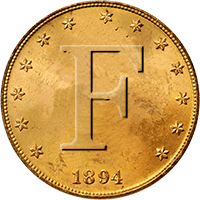Here is a "fancy" spindle whorl. Most that I've found have been plain with no design / decoration. Spindle whorls are suspected to be used from Roman through Medieval times (AD 50 to 1500).
[attachment 137891 spindlewhorl125dpi.jpg]
Here is a Google bit of info on spindle whorls and their photo showing how it was used to spin thread or yarn onto a wooden spindle
[attachment 137892 spindles-highWhorl.gif]
Top / High Whorl Spindle
A top-whorl spindle is also a suspended spindle and has the whorl at the top of the shaft and is usually lightweight. There is a hook on top of the spindle just above the whorl for catching the yarn. Top-whorl spindles rotate at a higher speed (high-whorl spindle), which makes them ideal for spinning thin yarn and fine fibers. It is believed that the top-whorl spindle originated in the Middle East.
Check out this series of photos of spindle whorls found in the UK;
http://www.ukdfd.co.uk/ukdfddata/showcat.php?cat=122
[attachment 137891 spindlewhorl125dpi.jpg]
Here is a Google bit of info on spindle whorls and their photo showing how it was used to spin thread or yarn onto a wooden spindle
[attachment 137892 spindles-highWhorl.gif]
Top / High Whorl Spindle
A top-whorl spindle is also a suspended spindle and has the whorl at the top of the shaft and is usually lightweight. There is a hook on top of the spindle just above the whorl for catching the yarn. Top-whorl spindles rotate at a higher speed (high-whorl spindle), which makes them ideal for spinning thin yarn and fine fibers. It is believed that the top-whorl spindle originated in the Middle East.
Check out this series of photos of spindle whorls found in the UK;
http://www.ukdfd.co.uk/ukdfddata/showcat.php?cat=122
